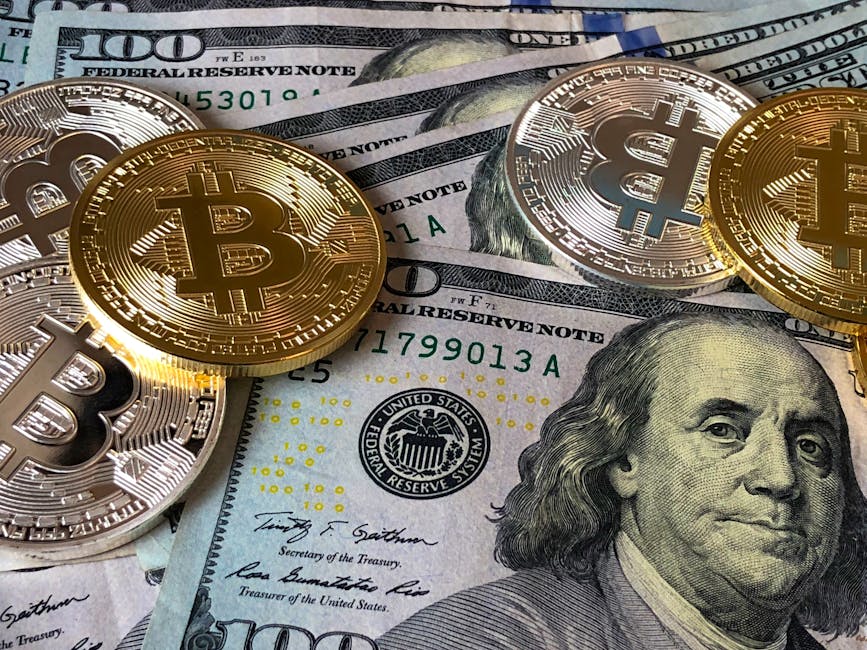Why Learn Crypto Trading—Now?
Crypto isn’t dead. Far from it. Prices swing, headlines roar, but through it all, the market keeps moving—and that movement is exactly where the opportunity lives. Volatility might scare off the risk-averse, but for traders who know what they’re doing, it’s like fuel. Smart decisions made at the right time can make a big difference—whether you’re holding for weeks or riding the charts by the hour.
The barrier to entry? Lower than ever. You don’t need a finance degree or Wall Street connections to get started. A laptop, internet connection, and some well-structured guidance are enough to give beginners real footing. Trading knowledge is one of the few things that truly levels the playing field—and when you’re armed with it, you’re not just reacting to the market, you’re reading it.
Most mistakes new traders make? Totally avoidable. FOMO buying, panic selling, ignoring risk, chasing hype. They all trace back to a lack of education. Taking the time to learn the basics—how markets behave, how trades succeed or fail—can save you from a lot of pain (and lost capital). Educate yourself before you hit the buy button. Your portfolio will thank you.
What You’ll Get from Free Courses
Free doesn’t mean fluff—at least not when you choose the right crypto trading courses. The best ones walk you through essentials without overwhelming you or skipping the parts that actually matter when you’re just starting out.
First up: foundations. Think of this as your starter pack. You’ll learn what a wallet actually does (hint: more than just storing coins), how exchanges like Binance or Coinbase work, and what acronyms like FUD, ATH, and DYOR mean. If this sounds basic—that’s the point. You need ground to stand on before you start stacking charts.
Next, technical analysis. It’s not just for finance bros. Good courses break down charts, candlestick patterns, support-resistance zones, and key indicators like RSI and MACD into plain English. You won’t become a chart wizard overnight, but you’ll stop seeing them as hieroglyphics.
Risk management? Absolutely critical. These courses teach one hard truth: you will lose trades. The goal is to lose small, win big, and stay in the game. Stuff like setting stop losses, using position sizing, and not going all in on a gut feeling—this is where most newbie traders crash. Get this part wrong, and the rest doesn’t matter.
Then there are strategies. Free materials often cover the basics of swing trading, day trading, and long-term holding (yes, HODLing is still a thing). Figuring out which suits your style—based on time, risk tolerance, and goals—is half the battle.
Finally, here’s the kicker: some free courses go deeper than you’d expect. The paid stuff isn’t always better. In fact, quality free content often comes from platforms that actually want to educate—not just sell you something later.
Bottom line: don’t underestimate what you can learn for zero dollars. Just make sure you’re putting in the time, because shortcuts don’t last in crypto.
Binance Academy is easily one of the best entry points for crypto newbies. It’s clean, straightforward, and offers content in multiple languages—so you’re not stuck translating jargon while trying to learn what a blockchain is. The tools are structured, from basics to more advanced topics, making it a strong foundation-building hub.
Coinbase Learn keeps things simple, which is key when you’re starting out. Their modules break complex ideas down without diluting the point, and the best part? You can earn tokens while learning. It’s not life-changing money, but a smart way to get hands-on without spending a dime.
BabyPips (Crypto Section) adapts its long-time forex training experience for crypto traders. It’s more technical, but not overwhelming—perfect if you want to understand charts and indicators without falling asleep. Each lesson builds on the last, so you’re not just skimming headlines.
Then you’ve got YouTube Educators. There’s a ton of noise on the platform, but some channels punch through with real guidance. Look for creators who show their process, explain their logic, and aren’t pushing some coin. The good ones teach you how to think, not what to buy.
Finally, CryptoZombies is where things get hands-on, especially for the tech-savvy crowd. It teaches you to code smart contracts by building a game. You don’t need to be a developer to try it—but a little curiosity and patience help. It’s niche, yes—but powerful if you want to know what’s under the hood.
Best Free Tutorials for Visual & Practical Learners
Reading theory is one thing—putting it into practice is where the real learning happens. That’s why hands-on tutorials matter, especially if you’re a visual learner or someone who learns by doing (read: most of us).
Start with basic walk-throughs on how to set up trades. Plenty of free courses and YouTube videos show you how to pick a crypto pair, set your order type (market or limit), and place a trade using platforms like Binance, Coinbase, or KuCoin. These step-by-step guides strip the mystery out and give you muscle memory.
Next up: candlestick charts. Yes, they look like ancient hieroglyphs at first. But once you get a hold of the basics—what a wick is, how to spot a bullish or bearish candle, what patterns signal reversals—it becomes second nature. Search for short-format tutorials that break this down in five-minute chunks. Bonus points if they use simple language and real chart examples.
Finally, don’t trade with real cash until you’ve practiced. Demo exchanges and paper trading platforms like TradingView, Binance’s testnet, and Bitget’s sandbox are built for risk-free learning. Use them to simulate trades, track outcomes, and test strategies without burning real money. Think of it as a flight simulator for your crypto brain.
You don’t need to master everything overnight. Just show up, mess around with the tools, and let repetition do its job.
Red Flags: What Free Doesn’t Mean
Just because a course costs $0 doesn’t mean you should take its advice as gospel. Especially when it drifts into financial territory. Free content should teach—not preach. If someone’s giving you buy/sell signals or making guaranteed profit claims, run. That’s not education, that’s marketing in disguise.
Be wary of courses that keep circling back to a single token or project. When the content starts sounding like a pitch deck, you’re not learning—you’re being nudged. A quality course outlines concepts and tools; it doesn’t wrap everything around one coin’s potential.
And then there’s the biggest trap: the upsell funnel. You start with a free mini-course and suddenly you’re five emails deep into a $2,000 mastermind pitch. Stick to creators who make the course the product—not bait for something else. Learn the material, not their monetization strategy.
Keep your guard up. Free can be valuable—but only if you stay in the driver’s seat.
Learning Strategy That Works
Building your crypto trading knowledge is more than just absorbing theory—success comes from structured learning, consistent practice, and honest self-assessment. Here’s how to turn information into actionable skill:
Combine Theory with Practice
Even the best tutorials won’t make you a trader unless you apply what you learn. That’s where paper trading (using simulated funds) comes in.
- Use demo platforms to place practice trades without real risk
- Mimic real market conditions to test strategies with confidence
- Learn from both your wins and your losses—without losing money
Make Learning Routine (Not Random)
Consistency beats cramming every time. Dedicate short, regular sessions to make steady progress.
- Aim for 30 minutes a day instead of binging once a week
- Focus each session: one lesson + one hands-on practice
- Use breaks and reviews to reinforce knowledge
Track What You’re Learning
Just as successful traders track their trades, smart learners track their learning. This helps identify gaps, measure progress, and stay accountable.
- Keep a learning journal or Excel sheet to log topics covered
- Note what confused you—and circle back until it clicks
- Set small goals and milestones (e.g., “understand RSI by Friday”)
Pro Tip: Treat your education like a portfolio. Diversify your learning sources, rebalance your study habits, and always check the return on your time invested.
Your future trading mindset is built right here.
Bonus: Where Free Ends and Smart Investing Begins
Level Up After the Free Stuff
Once you’ve worked through beginner courses and free tutorials, you’ll probably hit a plateau. That’s normal—and it’s actually a great sign that you’re ready to apply your skills in more advanced or targeted ways.
Here’s how to keep your momentum going:
- Start a paper trading journal. Document your decisions, wins, and losses—this helps turn lessons into habits.
- Join a serious community. Look for Discord groups or subreddits where experienced traders talk strategy, not hype.
- Deep-dive into one strategy. For example: specialize in swing trading or focus on technical analysis.
When to Consider Paid Content (Yes, Sometimes It’s Worth It)
While the crypto education space is flooded with free material, quality premium content can often be a worthwhile investment—especially when it provides structure, support, or community:
- Low-cost online courses on sites like Udemy, Teachable, or Skillshare can offer quality without the fluff and upsell traps.
- Subscription-based platforms may include live classes, Q&A sessions, or trading simulators.
- Mentorship programs (real ones, not influencer scams) can fast-track your learning, but always check for legit credentials.
If you’re paying, make sure you’re getting access to names, not brands. Your money should buy insight—not just packaging.
Curated Resources That Endure
A good rule for self-education: mix formats to strengthen your understanding. Here are some beginner-and-beyond resources worth bookmarking:
Recommended Books:
- The Bitcoin Standard by Saifedean Ammous
- Cryptoassets by Chris Burniske and Jack Tatar
- Technical Analysis of the Financial Markets by John Murphy (more general, but a classic)
Top Podcasts:
- Bankless – DeFi concepts broken down weekly
- Unchained by Laura Shin – Deep interviews with high-profile builders and investors
- The Pomp Podcast – Insights from major voices in the crypto space
Reliable Subreddits:
- r/CryptoCurrency – For general news and discussion
- r/BitcoinBeginners – Friendly crowd for people just getting started
- r/CryptoMarkets – Focused on trading insights, technicals, and macro trends
Your Next Step
Once you’ve built a foundation and started practicing what you’ve learned, the next logical leap is thinking about strategy. That’s where structured portfolio thinking comes into play.
Consider exploring deeper with our guide: Building a Crypto Portfolio: Tips and Strategies
Stay curious. Stay cautious. But above all, keep learning.
Final Words
Getting into crypto trading isn’t about instant wins—it’s about stacking skills before risking real money. Yes, knowledge costs time. But bad trades? They cost way more. That’s the trade-off. You put in the work now, or pay for it later.
Free courses and tutorials are out there, and many are genuinely valuable. But they don’t help if you ghost after two sessions. The key is consistency. Show up, take notes, test ideas (on demo accounts, please), and build muscle over time. That’s how you turn information into intuition.
Start small. One concept, one trade, one habit at a time. Forget chasing pumps. It’s about staying calm when everything else moves fast. Trade smart, stay patient—and respect the process.

 Lead Markets & Trading Strategist
Lead Markets & Trading Strategist
